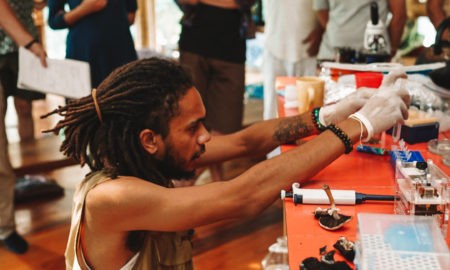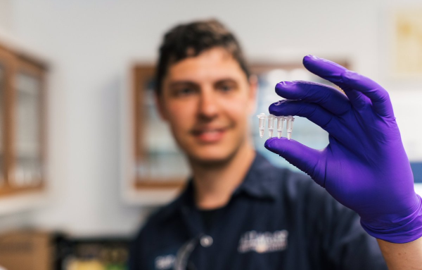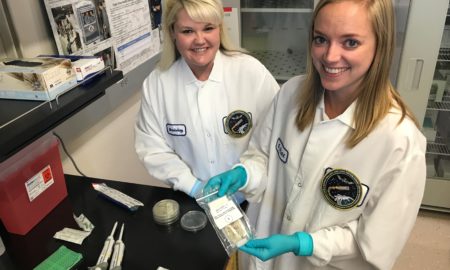Meet The eDNA Collaborative 2024 Minigrant Recipients (Part 1)
The eDNA Collaborative has identified twenty-two inspiring researchers whose projects exemplify the power of eDNA science. These diverse researchers hail from all corners of the globe and their research addresses environmental management and conservation challenges using molecular methods. The Microgrants Program supports eDNA researchers with materials, equipment, and educational learning, providing funding to traditionally under-funded and under-resourced areas.
As these 2024 Microgrants roll out, we take enormous pride in playing a role in the provision and global distribution of portable molecular biology equipment to support these awards, including PCR and gel electrophoresis. We can’t wait to see these miniPCR tools being put to great use in the hands of these awardees.
Below we introduce you to six of the 2024 Microgrant recipients. Read their research abstracts below to find out about the diverse set of scientific problems this amazing group tackles.
Poorna Vidanage
 Affiliation: University of Moratuwa; Moratuwa, SRI LANKA.
Affiliation: University of Moratuwa; Moratuwa, SRI LANKA.
Research question
How effective is the utilization of environmental DNA (eDNA) for surveilling Anti-Microbial Resistant genes in wastewater treatment plants, particularly in the environments of hospitals, urban areas, and industrial facilities?
How will you use the miniPCR equipment to answer your research question?
Sampling will encompass wastewater treatment systems in diverse settings, including hospitals, urban locales, and industrial facilities. Separate collections of environmental DNA (eDNA) and total DNA will be obtained from each sample. Standard protocols, facilitated by miniPCR equipment, will ensure uniform processing. The subsequent step involves a comprehensive comparative metagenomic analysis between eDNA and DNA datasets. This analysis will be performed across different wastewater treatment systems, allowing for a characterization based on genetic composition. Correlation assessments will be conducted based on the identified (AMR) gene levels in both eDNA and DNA samples. Employing statistical significance, the study aims to underscore Anti-Microbial Resistant (AMR) genes detectable using eDNA as a representative proxy for the entire wastewater sample.
Rachel Turba
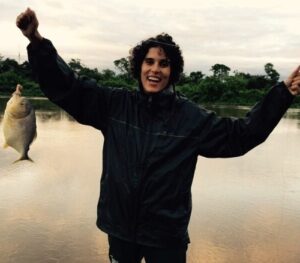 Affiliation: Pontifical Catholic University of Rio Grande do Sul‚ PUCRS; Porto Alegre, BRASIL.
Affiliation: Pontifical Catholic University of Rio Grande do Sul‚ PUCRS; Porto Alegre, BRASIL.
Research question
What universal primers work best to capture and identify neotropical mammal species from scats?
How will you use the miniPCR equipment to answer your research question?
This equipment will be used at a site of a Long Term Ecological Research Program (Pro-Mata), where survey and monitoring projects are already in development, and many classes and students do field work there. The equipment could not only help me and the lab with our question on sensitivity and specificity of primers in the neotropics (the project is part of a graduate student project working on diets and scats of carnivores in the Pro-Mata), but could also work as tools that other instructors and faculty could use for their classes with the students and contribute to the ongoing research at Pro-Mata. One of the faculties work with biodiversity in bromiliad water, and could also benefit from this equipment.
Paola Pulido-Santacruz
 Affiliation: Universidad del Rosario; Bogota, COLOMBIA.
Affiliation: Universidad del Rosario; Bogota, COLOMBIA.
Research question
Is it possible to test the shedding hypothesis by developing a rapid eDNA portable methodology to detect the presence of neotropical non-avian reptiles in Critical Danger of extinction in Colombia.
How will you use the miniPCR equipment to answer your research question?
In this project we are hoping to develop an in situ workflow that ranges from the collection of environmental samples to obtaining sequencing results and their analysis in approximately 48 hours. The use of miniPCR equipment will expedite the process to avoid eDNA degradation process, likely assisting on detecting of target species from collected samples.
Amit Kumar
 Affiliation: Sathyabama Institute of Science and Technology; Chennai, INDIA.
Affiliation: Sathyabama Institute of Science and Technology; Chennai, INDIA.
Research question
Marine microbial biodiversity assesment in the seagrass beds of Rameswaram, Palk Bay, India.
How will you use the miniPCR equipment to answer your research question?
We do not currently have molecular biology facilities in the field station at a remote location on the Rameswaram Island, so we are unable to conduct the work on-site. New miniPCR equipment will be used to carry out marine molecular ecological studies directly in our field station. I would like to develop the facilities to carry out eDNA work on site.
Harshad Kulkarni
 Affiliation: Indian Institute of Technology Mandi, School of Civil and Environmental Engineering; Mandi, Himachal Pradesh, INDIA.
Affiliation: Indian Institute of Technology Mandi, School of Civil and Environmental Engineering; Mandi, Himachal Pradesh, INDIA.
Research question
Investigating biogeochemical alterations in the mid-Himalayan ecosystem due to natural and anthropogenic stressors.
How will you use the miniPCR equipment to answer your research question?
The miniPCR will be used to estimate the microbial diversity in mid-Himalayan regions under multiple instances of natural and anthropogenic contamination. For instance, Himachal Pradesh state is known for horticulture (Apple state of India) and uses significant amounts of pesticides. We will use miniPCR to identify microbial diversity in pesticide contaminated soils and also study microbial degradation of pesticides. Other contaminants of interest include geogenic heavy metals, pharmaceutically active compounds, microplastics and their presence in soils, sediments, porewater, groundwater, cold and hot springwater, and rivers in the mid-Himalayan region. Pristine locations in this region are consistently receiving anthropogenic stresses and therefore by studying long-term microbial diversity, we will be able to understand how this ecosystem responds to such changes. In short, after extracting the DNA from the above-mentioned environmental samples (soils, sediments and water), we will use miniPCR thermal cycler to amplify the DNA using appropriate primers, and electrophoresis to visualize and estimate the size of each band, and perform the sequencing. IIT Mandi being a premier hire education institute in India, we will train students on miniPCR through my Applied Environmental and Contaminants Biogeochemistry lab in the School of Civil & Environmental Engineering. Overall, I believe that miniPCR equipment will be used for research (field- and lab-based work by myself and doctoral students) as well as teaching and training.
Mexford Mulumpwa
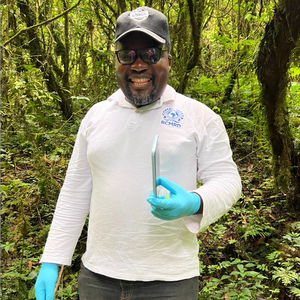 Affiliation: Lilongwe University of Agriculture and Natural Resources (LUANAR) and Malawi Government (Department of Fisheries); Lilongwe, MALAWI.
Affiliation: Lilongwe University of Agriculture and Natural Resources (LUANAR) and Malawi Government (Department of Fisheries); Lilongwe, MALAWI.
Research question
Can we use eDNA to further classify very closely related fish species in Malawi and assess biodiversity in a more environmentally friendly without further endangering already endangered fish species?
How will you use the miniPCR equipment to answer your research question?
I will start by solving a fish taxonomic confusion that we have when describing and naming Opsaridium microcephalum of Bua River and/or Lake Malawi and Opsaridium microcephalum of Mkulumadzi River which is also thought to be Opsaridium tweddleorum by other scientists. The local people describe the Mkulumadzi Opsaridium microcephalum is dwarf as compared to species of the other water bodies suggesting that it could be Opsaridium tweddleorum. The miniPCR and the blueGel electrophoresis system will assist in solving this taxonomic confusion and similar situations that we have. With the miniPCR and available reference DNA from our previous works, we will be able to assess fish biodiversity of different water bodies by just collecting water samples and filters through the application of eDNA. I am not happy to assess the biodiversity of endangered fish species by trying to catch them leading to mortalities. With this equipment, I will be employing eDNA and assessing fish biodiversity without further endangering our rare fish species.

